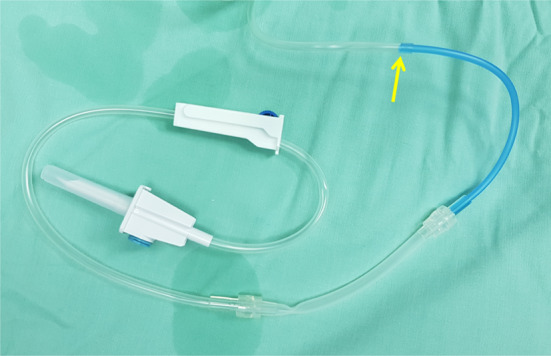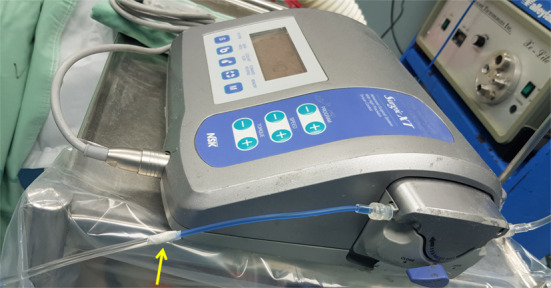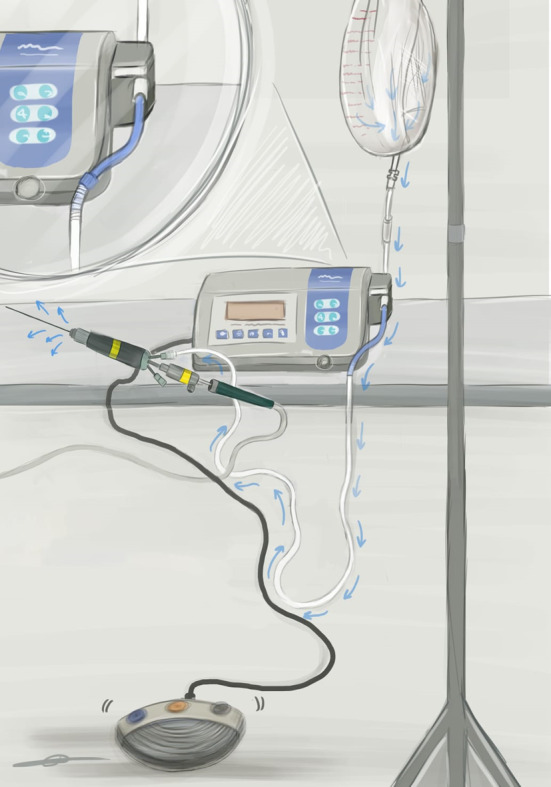Proper irrigation is of outmost importance to distend the joint and for visualization during arthroscopy. Various irrigation systems have been introduced, with the basic components for joint arthroscopy including a saline bag, inflow tubing, a pressure gradient supplied from gravity or an automated pump, and outflow tubing [1].
While a gravity flow system, in which saline bags are attached to an intravenous (IV) pole above the level of the joint being operated on, can be easily set up, the rate of irrigation solution cannot be controlled.
Hand irrigation using the 6O-ml syringe with intravenous extension tubing and a three-way stopcock provides for both continuous and direct irrigation, but requires a staff member to operate it throughout the surgery. When using an automated external compression device, the pressure is applied to the irrigation bag with a maximum pressure set at 150 mm Hg. The irrigation can be stopped by using a three-way stopcock.
Various complicated and expensive automated irrigation pump systems exist, all of which are composed of the same basic components, i.e., transparent safety covers, irrigation roller pump, power pad, display, and adjustment. The operator selects the pressure and the solution flows from the bags through the extension tubes.
In this technical note, we present our simple, yet effective, technique for irrigation while performing arthroscopy using a foot-controlled motor system for implantology.
Technique
After gloving and gowning, the irrigation system is set up during operating room setup. We use the NSK Surgic XT System with its dedicated tubing system; although any motor system for implantology can be used. The goal is to adapt the motor system tubing with the extension tubing attached to the arthroscope. We use a 3-way luer handle with flexible arthroscope; however, the tubing fits every arthroscopic system. First, after ensuring that the corresponding part of the tube which is inserted into the motor device is intact, we cut the motor system tube and the extension tube and then inserted them into one another with (Figs. 1, 2). The final result is one long tube attached on one side to the motor system and the other side to the arthroscope. When pressing the pedal, the irrigation fluid flows from the IV solution bag, to the motor system tube, to the extension tube and finally to the arthroscope for proper visualization during arthroscopy (Fig. 3). The system enables the main surgeon performing the arthroscopy to control the irrigation solution flow via the pedal, and through the motor system without the need for a surgical assistant or nurse. From our experience, the middle flow rate is sufficient to provide proper extension and visualization and to avoid fluid extravasation to adjunct tissues.
Fig. 1.

The motor system tube and the extension tube ends are inserted into one another (yellow arrow)
Fig. 2.

Set up of the foot-controlled irrigation using motor system for implantology (NSK Surgic XT System). Notice the connection (yellow arrow) between the motor system tube and the extension tube
Fig. 3.

Illustration of the foot-controlled motor system for implantology used for irrigation during TMJ arthroscopy
Various motor systems for implantology are present in every maxillofacial surgery clinic or department. Using this readily available system, we were able to consistently obtain a continuous, stable and surgeon-controlled irrigation during TMJ arthroscopy.
Footnotes
Publisher's Note
Springer Nature remains neutral with regard to jurisdictional claims in published maps and institutional affiliations.
Reference
- 1.McCain JP. Arthroscopy of the human temporomandibular joint. J Oral Surg. 1988;46(8):648–655. doi: 10.1016/0278-2391(88)90107-3. [DOI] [PubMed] [Google Scholar]


